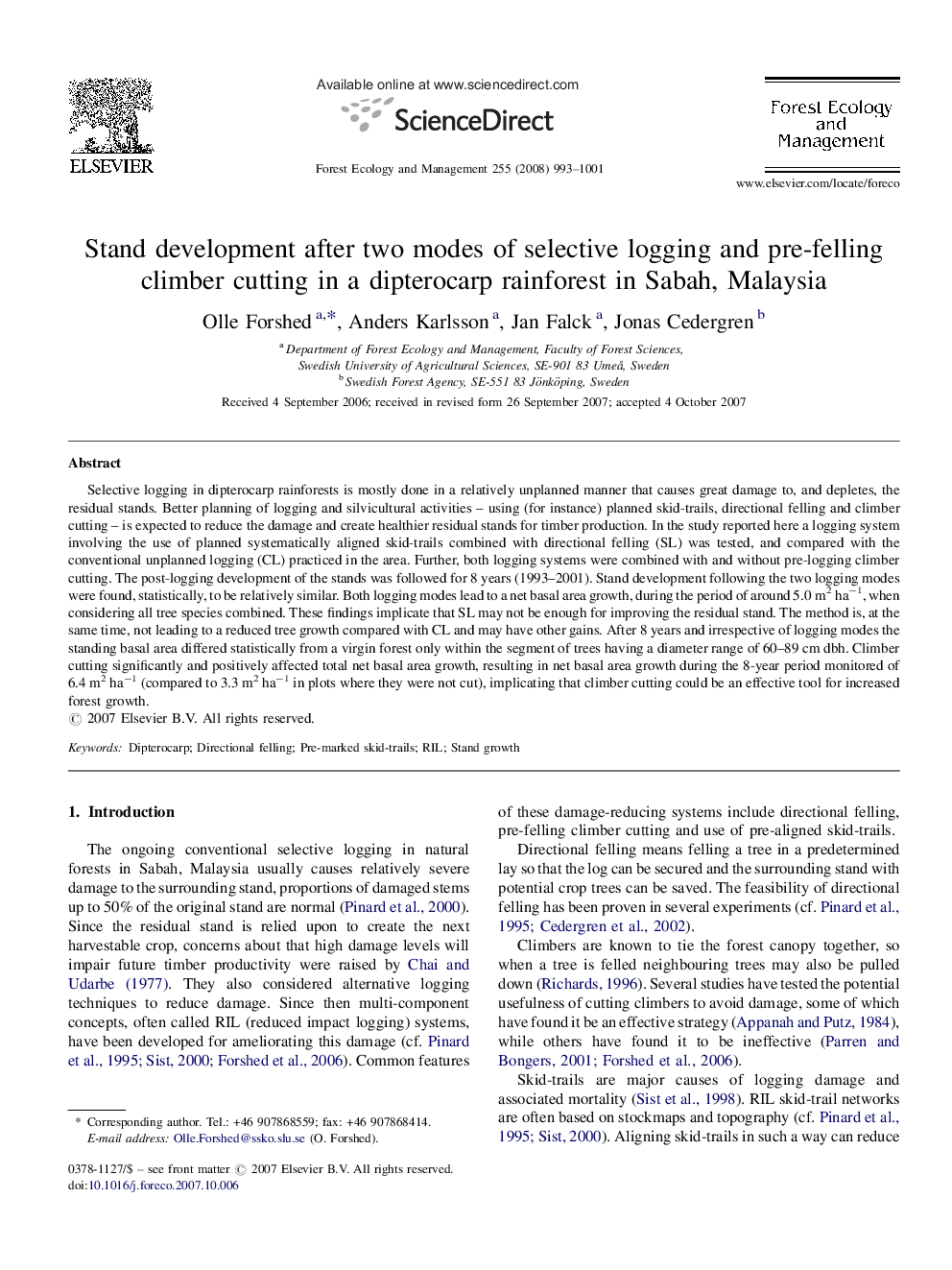| Article ID | Journal | Published Year | Pages | File Type |
|---|---|---|---|---|
| 89877 | Forest Ecology and Management | 2008 | 9 Pages |
Selective logging in dipterocarp rainforests is mostly done in a relatively unplanned manner that causes great damage to, and depletes, the residual stands. Better planning of logging and silvicultural activities – using (for instance) planned skid-trails, directional felling and climber cutting – is expected to reduce the damage and create healthier residual stands for timber production. In the study reported here a logging system involving the use of planned systematically aligned skid-trails combined with directional felling (SL) was tested, and compared with the conventional unplanned logging (CL) practiced in the area. Further, both logging systems were combined with and without pre-logging climber cutting. The post-logging development of the stands was followed for 8 years (1993–2001). Stand development following the two logging modes were found, statistically, to be relatively similar. Both logging modes lead to a net basal area growth, during the period of around 5.0 m2 ha−1, when considering all tree species combined. These findings implicate that SL may not be enough for improving the residual stand. The method is, at the same time, not leading to a reduced tree growth compared with CL and may have other gains. After 8 years and irrespective of logging modes the standing basal area differed statistically from a virgin forest only within the segment of trees having a diameter range of 60–89 cm dbh. Climber cutting significantly and positively affected total net basal area growth, resulting in net basal area growth during the 8-year period monitored of 6.4 m2 ha−1 (compared to 3.3 m2 ha−1 in plots where they were not cut), implicating that climber cutting could be an effective tool for increased forest growth.
